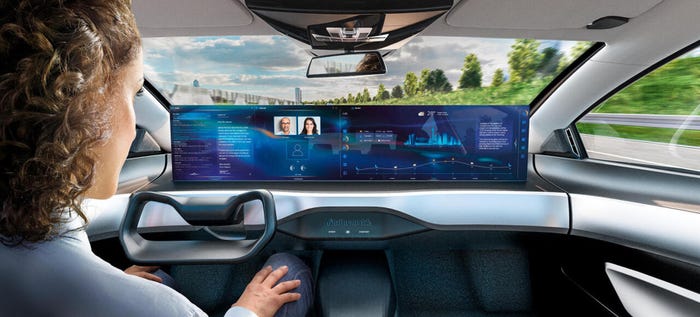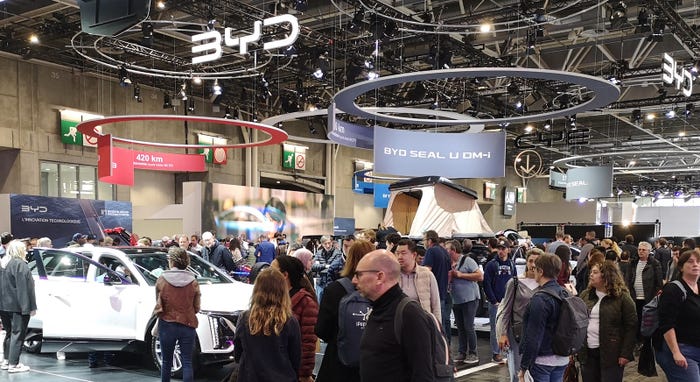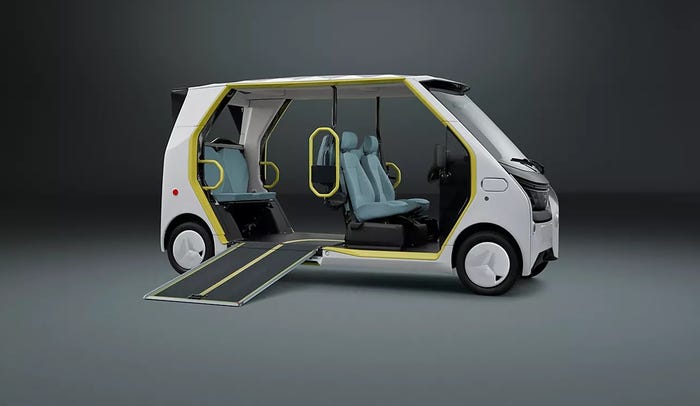August 30, 2023
.jpg?width=1280&auto=webp&quality=95&format=jpg&disable=upscale)
This is the fourth in a series of articles analyzing the results from this year’s Urban Science/Harris Poll/Dealership Transformation Index™ survey on consumer perceptions about the relevance of the traditional automobile dealership model.
Dealers are anxious to rebuild their sales volumes, especially now that many manufacturers have begun to replenish retail inventory. The question is, what are the best strategies to meet that goal?
The answer may seem fairly straightforward until the electrification challenges detailed in an earlier report are considered, but even as dealers beef up training and facilities to prepare to serve increasingly higher volumes of battery-electric vehicles, they face another daunting hurdle that has increased exponentially since the pandemic: omnichannel marketing. That is a sales process that allows buyers to customize their transactions using either virtual online tools, in-person dealership visits or a combination of both to complete the sales process.

4_9.png
A growing number of buyers want a sales process that allows them to start their purchase journey one way and finish it another, using everything from the internet, email and texting exchanges and visits to the showroom to complete the transaction. That requires automobile dealerships to install up-to-date technology and train all dealership staff – from sales to F&I and service personnel – on how to use those tools and help shoppers to complete their purchases seamlessly by whatever communication methods they choose.
As dealers scramble to meet those challenges, they realize it won’t be easy to attain the flexibility needed to succeed. A 2023 survey conducted by Urban Science and The Harris Poll found 77% of dealer respondents report growth for their dealerships likely will be “harder,” compared with 60% of those agreeing with that statement in 2022. Dealers don’t specifically point toward a shift to omnichannel sales and marketing as the reason for their responses, though the factors they cite suggest faster, more efficient and tech-driven processes will be required.
Part of the challenge for franchise dealers is in meeting customer expectations that new retail disruptors have raised. Thirty percent of dealers surveyed cite customers buying through non-traditional channels such as CarMax and Carvana as having the biggest impact on their business today. Another 18% cite customers buying directly through manufacturers’ websites.

5_12.png
Add a disconnect between dealers and consumers regarding selling/buying priorities, and it’s clear why traditional automobile dealers need to change their sales cultures and practices to ensure quick, seamless transactions that resolve customers’ pain points or at least make the process more straightforward and less time-consuming.
Awareness of these disconnects can help dealers better finetune their omnichannel processes and reshape their sales methodologies to meet evolving customer demands.

1_10.png
That means dealers must consider adjusting their views in key areas. Here are some specific gaps among the perceptions of dealers and consumers revealed in the Urban Science survey:
Most new-car buyers (66%) report the overall cost of vehicles is a concern, but only 48% of dealers cite that.
Gas prices concern 57% of the consumers surveyed, compared with 48% of dealers.
Insurance is another factor that inhibits 40% of buyers, though only 19% of dealers cite it as a concern.
Of course, to quell those concerns, dealers must first engage with customers. That’s not always easy due to many factors that dealers report hinder sales, some of which the pandemic ushered in, including:
Yet issues arising partly from the pandemic ushered in a new crop of concerns for dealers, including:
Non-traditional retailers lure buyers away from franchised dealers (37%).
The need to navigate expectations as buyers consistently shift to build-to-order preferences (20%).
Improving and extending training of inexperienced salespeople (15%).

2_12.png
That last piece is important in many regards, including getting salespeople accustomed to selling to a buying public armed with an increasing amount of competitive pricing information. That is evidenced by the 12% of dealer respondents who cited “too much sales data/info” as a key seller’s roadblock.
The good news for dealers is that automobile buyers still prefer in-person transactions when purchasing vehicles, at least for some aspects of the process.
It’s not surprising the vast majority of buyers – 93% – want in-person test drives. That’s up four points from the previous survey results. Other in-person preferences include vehicle set-up and orientation (76%), price and term negotiations (67%), working with F&I contracts and other paperwork (65%), and even selecting the vehicle they want to buy or lease (63%). Half of the buyer respondents want to learn about new vehicle features and specifications, and half want to choose vehicle accessories during in-person meetings.

3_11.png
Some might think those numbers show dealers shouldn’t be overly concerned about losing sales due to a lack of omnichannel options. But there is a catch.
As noted in our first report, millennials (age 27-42) are a key and growing dealer buyer demographic. And preferences for online car shopping are highest among millennials, males and those living in the West. That means dealers must adapt quickly or miss sales to these key demographics and younger generations entering the market.
Three out of four dealers view OEM digital retailing as an “opportunity.” That’s great news, showing dealers know they can benefit from reaching and transacting with buyers in new ways. The downside? Dealers citing OEM-led digital retailing as a “threat” increased from 17% in 2022 to 25% in 2023. That indicates a growing percentage don’t believe they will benefit from omnichannel communications to consumers from manufacturers or even their vendors.
The dealers that report they are pro digital retailing list as benefits increased overall sales (57%), keeping pace with digital brands (57%), offering customers’ flexibility (56%), allowing the dealer to reach more potential buyers (53%). More than half of the dealers (51%) report it will allow them to compete with non-traditional sellers (CarMax, Carvana). Respondents also say digital retailing gives customers more buying transparency (47%) – something they strongly desire, is more convenient for dealers (39%) and connects dealers with more resources that can help close sales (35%).
Whatever their viewpoints on OEM digital retailing and other specifics, 91% of dealers report currently installing or considering alternative retail formats. That should begin positioning them to meet the needs and wants of the all-important millennial buyer. Dealers who want to revise their operations to suit the younger buyers better may want to consider what tactics others report they are employing or would consider in the future:
Just over half of the dealers (51%) say they are considering or are currently offering test drive centers in accessible locations and make multiple vehicles available for test driving.
Almost half (47%) of respondents say they are considering or are currently making an extra effort to get the word out about their dealership and its vehicles by installing temporary displays at high-traffic events.
Forty percent report they are considering or are currently trying to make life easier for their customers through mobility points that offer vehicle sharing such as loaners, delivery and service drop-offs.
Thirty-three percent of respondents say they are considering or are currently helping their customers get to know the brands they sell by offering brand immersion experience centers
Just over a quarter of respondents (26% ) are considering or are currently courting customers with short-term, “pop-up” dealerships.
Adding boutique stores in high-traffic areas is how 21% of dealer respondents are considering or are currently getting their name and services out to the buying public.

6_13.png
Urban Science: Our unrivaled near-real-time industry sales data, and consulting and technology offerings, have driven innovation, efficiency and profitability into every corner of the automotive industry. Our capabilities and industry expertise help OEMs and dealers, and the advertising technology firms that support them, stay ahead of industry trends and achieve business certainty in even the most chaotic market conditions.
You May Also Like


.jpg?width=700&auto=webp&quality=80&disable=upscale)

